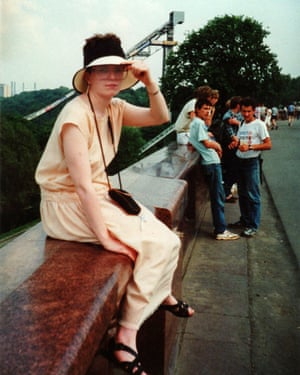Ann O'Loughlin - How the Trans-Siberian railway became the love train
Ann O’Loughlin set off across the Soviet Union nearly 30 years ago, looking for adventure and a chance to practise her Russian. Instead, she met a fascinating stranger in a leather jacket in the next carriage …

A love story: The Macedonian cop and an Iraqi refugee
Dear Leader Dreams of Sushi: What life was like serving Kim Jong-il and his heir
When I booked a ticket
on the Rossiya train to travel from west to east through different time
zones, I expected a great adventure, to rub shoulders with people from a
very different culture and to try out the small bit of Russian I had
diligently studied. Never did I expect to
meet the love of my life and say “I do” by the time the train skirted around
the far edges of Lake Baikal and out of the city of Irkutsk in Siberia. Ours was a holiday
romance like no other; love kindled on that great iron road put in place at the
time of the tsar and which tracks across the former Soviet Union week in, week
out. Over four days as the train trundled its way through the heart of Russia
and in to Mongolia, two people who were adamant they were not looking for love,
opened their hearts, fell madly in love, began planning a future, pledging to
spend the rest of their lives together.

Ann O’Loughlin. Photograph: Ann O'Loughlin
It was the late 1980s,
the era of glasnost and Gorbachev. I had stocked up on notebooks and
pens to write a journal of my travels, and Tolstoy was stuffed in my rucksack
for some light reading. John had packed notebooks and pens to sketch moments of
his journey. But all these lofty notions were forgotten as we got to know each
other and love blossomed.
The two of us, an Irishwoman and an
Englishman, were travelling to China out of Moscow, a journey of 7,854km. John
had caught my eye early on, tall with round John Lennon glasses and a leather
jacket hanging over one shoulder. He was in the compartment beside mine; we
first chatted as we stood in the corridor on a sweltering July day, the window
down, the warm air rushing past us as the train made its way out of the gloomy
industrial suburbs of Moscow; the grey city receding, the land folding away
farther than the eye could see. Outside Moscow, picket-fenced dachas, the
summer houses of the rich Muscovites, dotted the landscape before giving way to
countryside and forest, thousands of miles before we reached Irkutsk in a
journey that would take in big and small stations, all busy no matter the time
of day or night.
To understand this great railway journey
and enjoy it at its best, it is necessary to drop down a few gears and watch
the world go by. The world on the train goes on at its own pace as it devours
the railway miles, silver birch trees standing sentry along the line. The
compartments in the carriage are small, so during the day as all the other
passengers sit comfortably, it is easier to take up residence on the corridor
pull-down seats by the windows. People stop and chat passing back and forth to
the toilet or the samovar, where hot water is dispensed night
and day... read more:
https://www.theguardian.com/lifeandstyle/2017/jul/22/how-the-trans-siberian-railway-became-the-love-trainA love story: The Macedonian cop and an Iraqi refugee
Dear Leader Dreams of Sushi: What life was like serving Kim Jong-il and his heir
